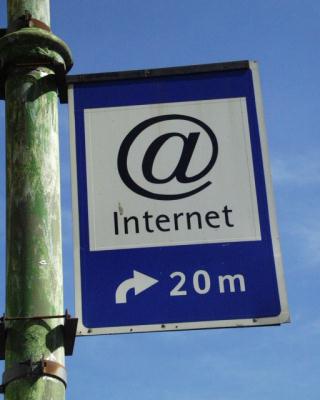How The Internet Really Works
3 min read
In a 1999 interview with Wolf Blitzer, then Vice President Al Gore uttered these infamous words: “During my service in the United States Congress, I took the initiative in creating the Internet.” While it’s true that Gore was a bit more tech savvy than his colleagues on Capital Hill, even popularizing the phrase “information superhighway,” he is hardly the person solely responsible for the Internet of today.
In 1973, the U.S. Defense Advanced Research Projects Agency (DARPA) began a research program to investigate technologies for interlinking computers. The goal of the project was to allow easier and more rapid dissemination of information. At its most basic, the Internet is simply a global collection of “interconnected networks.” But how does this amorphous web actually work?

Tapping into the Network
As the name suggests, every computer that is connected to the Internet is part of a network, even your personal laptop. For example, through your modem you dial a local number to connect to your Internet Service Provider (ISP). At work, you may be part of a local area network (LAN), but you most likely still connect to the Internet using an ISP that your company contracts with. When you connect to your ISP, you become part of their network. The ISP may then connect to a larger network and become part of their network, and thus the information that abounds on the World Wide Web is at your fingertips.
ISPs have Points of Presence (POP) in various geographical regions that allow local users to connect to their networks. Once at the POP level, with a large number of local users connected, networks then connect to other high level networks using Network Access Points (NAP). The Internet is a collection of huge networks that all agree to intercommunicate with each other at the NAPs. In this way, every computer on the Internet connects to every other.
NAPs rely on routers and something called an Internet backbone to communicate with each other quickly and efficiently. Backbones are composed of multiple strands of fiber optic cable capable of transmitting anywhere from 155 million bytes per second (Mbps) to 2,488 Mbps. These bundles of fiber optic cable are owned by a variety of companies all over the world, and all of them connect at various NAPs. In 1986, the U.S. National Science Foundation (NSF) initiated the development of the NSFNET, which today provides a major backbone communication service for the Internet. With its 45 Mbps capability, the NSFNET carries on the order of 12 billion packets per month between the networks it links (more on “packets” later). Routers essentially have two functions, and they act like a “switch” on a railroad track. Basically, they ensure that certain networks aren’t overloaded, and they send information to its intended destination
Information Packets
So now that networks of computers are connected how do we share information? The Internet matured in the 1970s as a result of something called Transmission Control Protocol/Internet Protocol (TCP/IP). In order to make the sharing of information across networks more efficient every piece of data is broken down into 1,000-1,500 byte-sized files called “packets” and then sent along the best route to its destination.
Aside from that, things like Internet protocol (IP), the Domain Name System (DNS), and Uniform Resource Locator (URL) help translate “human language” into the coding language of computers. Although there is much more to learn about the “world wide web” as we know it today, this is the foundation of the computer network that makes up the Internet.
Byline
Donovan Powell is fascinated by the internet, mobile phones and general technology. S4 owners looking for insurance should consider viewing the Galaxy S4 Internet insurer Protect Your Bubble.
Image credit goes to Ben Oh.




